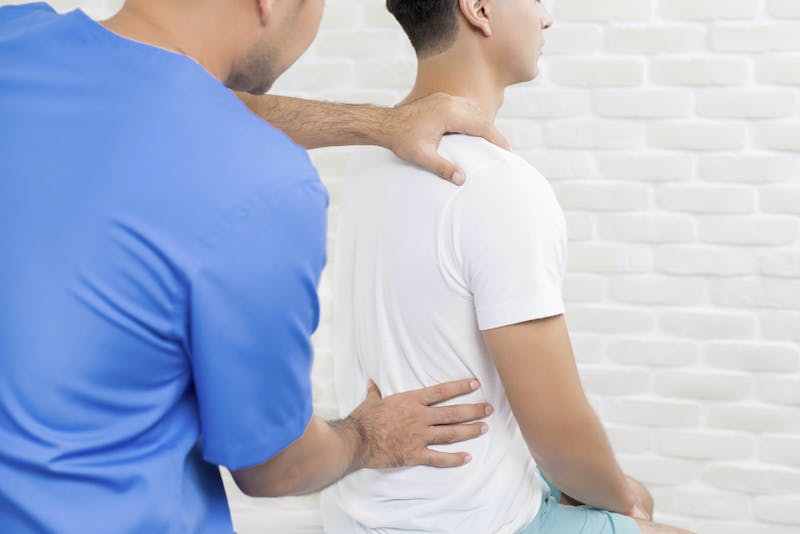Are you searching for a specialist that treats frozen shoulder treatment in Visalia or Hanford? You may not know, but our physical therapy treatment for frozen shoulders is some of the best you’ll find in the area.
Understanding a frozen shoulder/adhesive capsulitis diagnosis is important, so we wrote this article below to help those in need.
Comprehensive Review Finds That Several Types Of Exercise
Lead To Improvements For Patients With Frozen Shoulder
Adhesive capsulitis, or frozen shoulder, occurs when scar tissue forms within the shoulder. This causes the shoulder capsule to thicken and tighten around the shoulder joint, which means there is less room to move the shoulder normally. Although frozen shoulder affects up to 5% of the population, the reasons why it develops have not yet been clearly established. It is generally believed that not moving the shoulder normally for long periods is a leading factor, as most people who get frozen shoulder have kept their shoulder immobilized due to a recent injury, surgery, or pain. People between the ages of 40–60, women, and patients with arthritis, diabetes, cardiovascular disease, and other health conditions are also more likely to develop frozen shoulder.
Frozen shoulder usually develops slowly and gets progressively worse over time with more pain and loss of motion. It is typically divided into the following four stages:
- Stage 1: consists of the onset of symptoms, which gradually get worse over 1–3 months
- Stage 2: the “freezing” stage, which generally occurs 3–9 months after symptoms begin and is very painful
- Stage 3: the “frozen” stage, which involves the shoulder becoming even more stiff and difficult to move
- Stage 4: the “thawing” stage, which occurs within 12–15 months and involves pain decreasing significantly and range of motion starting to improve
Adhesive Capsulitis Treatment in Visalia & Hanford – Clinical Research Supports Physical Therapy
Physical therapy is commonly used and often recommended for frozen shoulder because it’s effective for addressing symptoms at every stage; however, there are some questions about the exercises used in physical therapy that have not yet been clearly answered. Therefore, a comprehensive study called a systematic review and meta-analysis was conducted to 1) compare the effectiveness of exercises alone and exercises in combination with other interventions and no exercises and 2) determine what kind of exercises are most effective for frozen shoulder.
Researchers review 33 studies on exercise therapy for frozen shoulder
To conduct the study, researchers performed a search of three medical databases for relevant studies about exercise therapy for frozen shoulder. This led to 33 studies being accepted into the review, which saw patients treated with a variety of exercises, some prescribed individually, and others prescribed as part of a comprehensive treatment program. The findings of all included studies were then reviewed and compared to one another with the goal of answering the two main research questions.
Results showed that exercises—both on their own and as part of a program—improved range of motion (ROM), function, disability, and pain, and the type of exercise performed had little to no impact on these improvements. Also, adding physical modalities to exercises did not provide any benefits to treatment outcomes, and programs that included exercises resulted in larger active ROM gains than programs that did not.
Frozen Shoulder Physical Therapy Visalia & Hanford – Physical Rehab is the Key
These findings support the effectiveness of physical therapy for frozen shoulder and suggest that the type of exercises performed and whether they are completed alone or combined with other interventions may not be important, so long as they are featured in a rehabilitation program.
Therefore, if you’re currently dealing with symptoms that may suggest the presence of frozen shoulder, Bacci & Glinn Physical Therapy can help.

